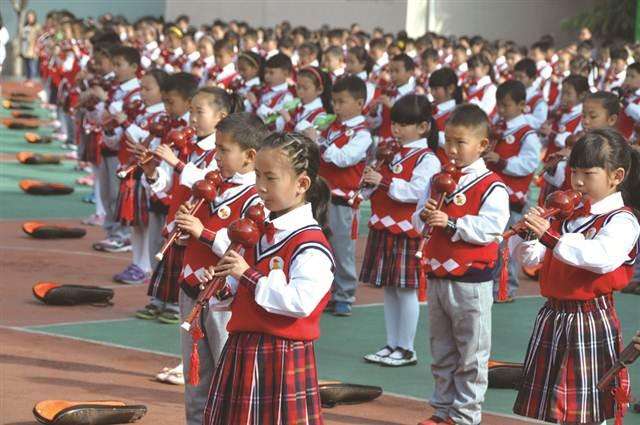How should I study in the second and third months of self-taught cucurbit flute?
I believe that everyone will follow the tutorial to learn by themselves. After the first month of hard practice, you can basically be familiar with the use of cucurbit silk. Then in the next two or three months, you can learn some corresponding cucurbit silk fingerings and techniques, so that you can Greatly increase the playable repertoire and playability.
The second month's learning content: active finger, beating, virtual finger vibrato, bass 3
1. Continue to practice long notes and scale etudes, and the practice time can be halved
2. Live finger etudes. This is the focus of this month, take more time to practice. The practice of live fingers is like the climbing grid in the guitar. It is the first and the most important. Many people will have relatively stiff fingers due to daily use. Only through practice can they move better. You can practice with the first-hand live-finger etude in the Hulusi beginner's tutorial. Don't worry about the difficulty. This live-finger etude is specially designed for beginners. After you are mastered, you can start to accelerate the practice. The second one can only be learned after the etudes are all perfect. Maybe only one or two songs a month.

3. In the second week of the second month, you can start to practice playing. Learn one or two typhony etudes, such as "Golden Peacock Jumping Lightly", "Moonlight Bamboo Rain" or the typhony etudes from the textbook you have in hand.
4. The virtual finger vibrato should be learned first, and long-term practice is also required to vibrate well.
5. In the fourth week, you can learn to play the bass 3. Mainly learn the conversion of bass 3 and bass 5, and the conversion of bass 3 and midrange 3 (and other sounds).
Learning content in the third month: abdominal vibrato, appoggiance, portamento, double spit (empty mouth practice)

1. Etudes for long notes, scales, and active fingers, continue to practice this month, and the time can be slightly reduced. It is better for amateur self-study to be no less than half an hour a day.
2. You can learn abdominal vibrato in the first week. One day to learn, to learn well requires long-term practice. Both abdominal vibrato and virtual finger vibrato can be learned in long-note etudes. If your textbook has an etude for abdominal vibrato, you can also practice it.
3. Etude of Appoggiance. In the first week of this month, you can also learn to practice Appoggiance and Appoggiance Etude.
4. Portamento. Portamento and Glide. This is a focus of this month. You can learn the Glide and Glide first, and if you have extra time, you can learn the Glide and Glide etudes. In the second week, you can start learning the up and down pitch technique.
5. Learn to practice double vomit with empty mouth (no need to practice on cucurbit silk this month). You can start practicing double vomit (and triple vomit) in the first week of this month. This exercise does not take up time and can be practiced while walking, riding in a car, or at ordinary times when there is nothing to do. For specific methods, please refer to the learning method of double vomiting in the "Beginner Course" on the top of Daixiang Love Bar, and the method in your textbook.
6. In the fourth week, you can learn to play "There is a Beautiful Place".
In the past two months, if you practice completely according to the content in the Hulusi beginner's course, you can basically play some relatively simple Hulusi music. Hope you all can keep going.
 渝公网安备 50010702504639号
渝公网安备 50010702504639号